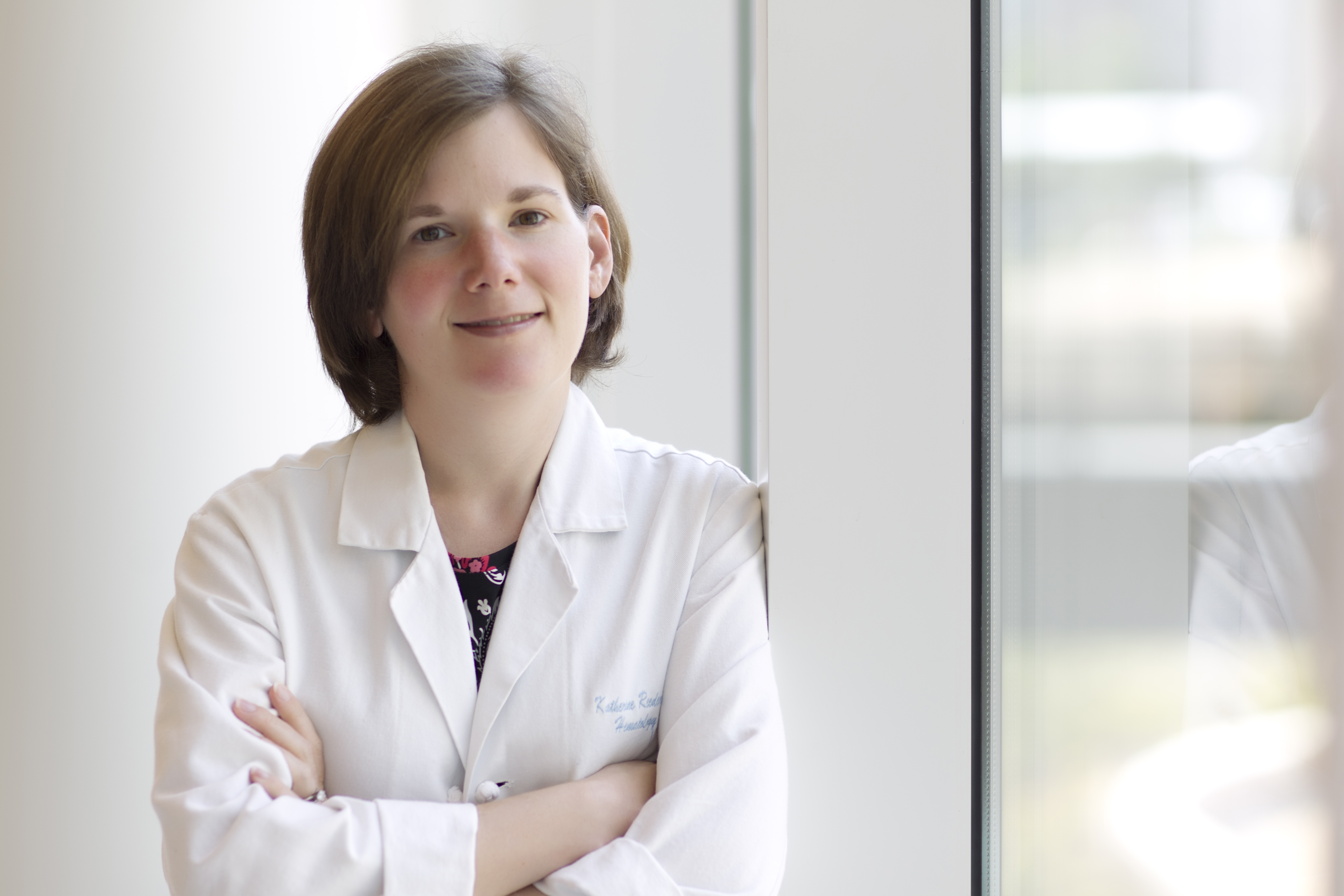UNC Lineberger clinicians and researchers presented scientific findings at the 2017 San Antonio Breast Cancer Symposium, the world’s largest breast cancer research meeting.


University of North Carolina Lineberger Comprehensive Cancer Center researchers presented findings and expertise at the 2017 San Antonio Breast Cancer Symposium, which drew more than 6,000 breast cancer physicians and researchers from around the globe.
UNC Lineberger’s Katherine Reeder-Hayes, MD, MBA, MSc, assistant professor in the UNC School of Medicine Division of Hematology/Oncology, presented preliminary findings from a series of studies seeking to understand racial disparities for black and white women with breast cancer.
With the development of medical advances, Reeder-Hayes said researchers want to know if there is equal access to these technologies, and if their use is improving outcomes for women of different races. Reeder-Hayes and her colleagues discussed early findings from a study designed to understand whether gene expression profiling of patients’ tumors affected chemotherapy treatment decisions differently in black and white women with breast cancer.
“We know that generally, when an innovation in cancer treatment comes out, minority women tend to get it at lower rates, and later,” she said.
Overall, women were less likely to get chemotherapy if they received gene expression testing, the researchers reported. However, the adjustment for black women was larger than it was for white women.
In women whose cancer had not spread to the lymph nodes, the use of gene expression testing was linked to a decrease in chemotherapy use of 19-percent among non-Hispanic white women, while for black women, testing was linked to a reduction in chemotherapy of 25 percent. The researchers drew from a study of 11,958 women who were diagnosed with breast cancer in North Carolina between 2005 and 2012.
Reeder-Hayes said they are still working to understand the significance of their findings.
“We have some hypotheses as to why chemotherapy downshifts more for minority women than white women, but we don’t yet know for certain, and we’re working on it,” she said. “We’re also looking downstream to see what impacts these decisions to downshift chemotherapy has on cancer recurrence.”
In another study, Reeder-Hayes and her colleagues, including UNC Lineberger’s Melissa Troester, PhD, Andrew Olshan, PhD, and Lisa A. Carey, MD, and Sophie Mayer, MS, took a look at whether there were differences in treatment delays for women depending on their race or their geographic location in North Carolina.
Previous studies have identified minority race as a risk factor for treatment delays. Reeder-Hayes said they wanted to look at delays both in terms of when women were able to start treatment after they received a positive biopsy test for breast cancer, to when they were able to complete all of their treatment, whether it be radiation, chemotherapy or surgery.
They compared treatment courses for 2,659 women in the Carolina Breast Cancer Study III, finding that black women had a higher risk of starting their treatment more than 60 days after diagnosis, and a higher risk of being delayed in finishing treatment compared to others with similar cancer features and treatment plans. Adjustments based on geographic location in the state, as well as socioeconomic factors, accounted for some of those differences by race, but it didn’t account for all of it.
“Some of the problems women are having getting timely treatment is about where they live, and some of it seems to be linked to other aspects of what it means to be a certain race ,” Reeder-Hayes said. “To close these gaps, we are going to need interventions targeted to reach not just women in certain geographic areas, but also to directly address disparities by race.”
UNC Lineberger researchers also participated in several panel discussions.
Gaorav Gupta, MD, PhD, UNC Lineberger member and assistant professor in the UNC School of Medicine Department of Radiation Oncology, shared his perspective as a radiation oncologist on breast cancer cases presented to the panel of cancer clinicians.
UNC Lineberger’s Carey, who is the physician-in-chief of the N.C. Cancer Hospital and Richardson and Marilyn Jacobs Preyer Distinguished Professor of Breast Cancer Research, moderated a panel discussion on the meeting’s key findings, and how they might be translated to influence patient care.
Charles M. Perou, PhD, UNC Lineberger member and May Goldman Shaw Distinguished Professor of Molecular Oncology, chaired a series of talks on genetic mutations in metastatic breast cancer, as well as presented a talk on breast cancer intra-tumor heterogeneity and its clinical implications.
Other UNC Lineberger researchers presented data at the meeting, including the following studies:
“Preclinical evidence that distant metastases may occur via the lymphatic route,” Patrick Leslie, PhD, Subrata Ghosh, and Alessandro Porrello, of UNC Lineberger; Brian Cooley, PhD, research associate professor in the UNC School of Medicine Department of Pathology & Laboratory Medicine; and Chad Pecot, MD, UNC Lineberger member and assistant professor in the UNC School of Medicine.
“Race and recurrence by PAM50 intrinsic subtype and ROR-PT score: The Carolina Breast Cancer Study.” Xuezheng Sun, PhD, assistant professor in the UNC Gillings School of Global Public Health; Reeder-Hayes; Erin Kirk, UNC Gillings; Linnea Olsson, UNC Gillings; Chiu Kit Tse, UNC Gillings; Mary Beth Bell of UNC Lineberger; H. Shelton Earp, MD, UNC Lineberger; Carey; Perou; Olshan,; and Troester.
